(First of a three-part series)
Interview by Susan A. De Guzman and Giselle P. Kasilag
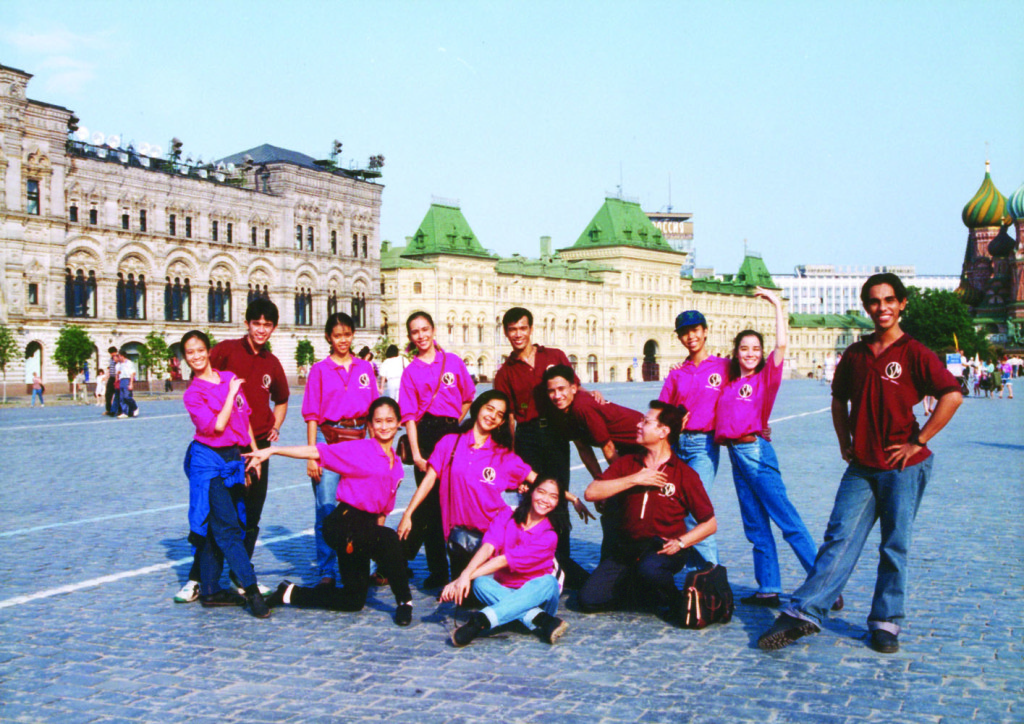
In 1995, twelve dancers led by Lisa Macuja and Osias Barroso banded together to form Ballet Manila. Together with artistic director Eric V. Cruz, the fledgling group – brimming with talent, bolstered by youthful optimism and supported mainly by a familial network – dared to dream big.
As a touring ensemble anchored on the Russian Vaganova method, Ballet Manila dedicated itself to the twin mission of bringing ballet to the people and people to the ballet. No town was too remote, no stage too unconventional for this group to perform in.

The pioneer twelve assumed multiple roles both on stage and off. On provincial tours, they not only had to dance; they also had to take care of rolling the linoleum after each performance. Macuja was the marketing person on the constant lookout for sponsors, while she and Barroso also handled the training of the ten younger dancers.
From those humble beginnings, Ballet Manila has blossomed into the country’s leading – and certainly busiest – classical ballet company. It has an annual season that unfolds at its home theaters (the Aliw Theater and Star Theater built for Lisa by husband Fred J. Elizalde), presenting both the classics and new choreographies. It performs all over the country through its Ballet & Ballads series, trains ballet hopefuls year-round at its School of Ballet Manila and discovers and supports scholars through its Project Ballet Futures.
As Ballet Manila marks its 21st year – with the show Ballet Manila 21 on March 19 serving as a preview of its 21st season opening in August – we sat down with now co-artistic directors Lisa Macuja-Elizalde and Osias Barroso for a special interview of “21 Questions.”
In this three-part series, the long-time colleagues and former dance partners – but most importantly, best friends – recall memories of the group’s initial years, describe the challenges they face today and share their vision of a Ballet Manila twenty-one years on.
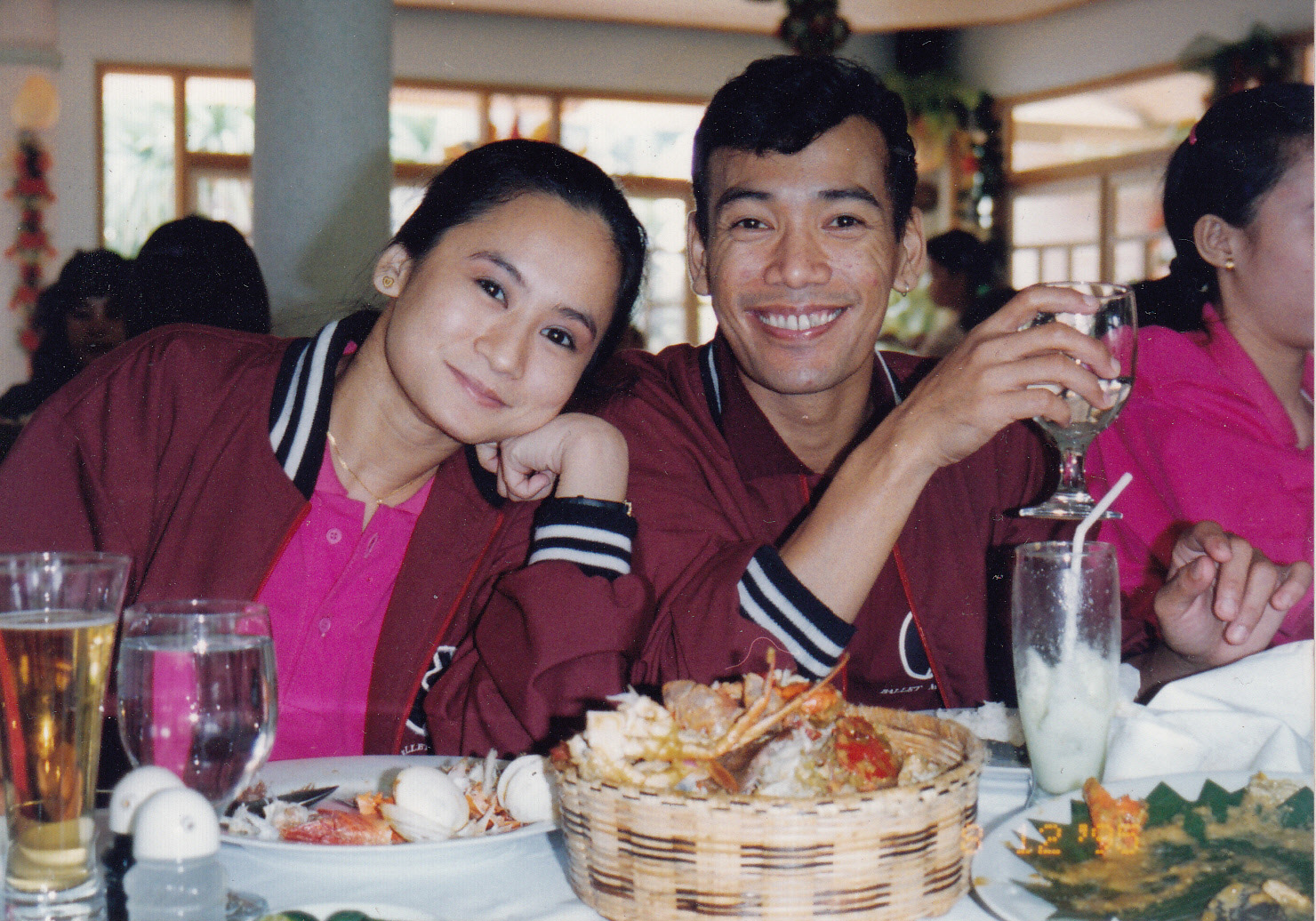
What are your memories of Ballet Manila’s first-ever performance?
Lisa Macuja-Elizalde (LME): Oh my Lord, it was in a church!
Osias Barroso (OB): We had a guesting arranged by (BM pioneer) Ianne Damian.
LME: It was in Union Church in UP.
OB: The music was Paganini.
LME: We did an inspirational-themed performance. It was on January 15, 1995.
OB: It was easy to prepare for because we just did one spot number and it was Ianne Damian who choreographed.
LME: And it involved all 12 dancers. But our launching concert was at PCIBank in February. It was hard! It was all classical. The stage was small.
OB: We opened with La Bayadere, then Bluebird and Odalisque. I choreographed my first piece, In Quest. What happened was, the cast consisted of the next dancers who were free so I had to create a dance for them! Everything really depended on who was available!
But everyone was in high spirits. And most of these kids were doing their first major classical works. We had a very good response from the house. Everybody was very supportive with the beginning of Ballet Manila. And because Lisa was there.
LME: I remember for Nutcracker, there was a sponsor who lent us a tiara with real diamonds for me to wear!
What were the strangest venues that you had to perform in?
LME: You encounter all sorts of stages and usually they’re cement so we had to put newspapers and our linoleum. There were stages without dressing rooms – with cats and frogs and bats!
OB: Or when you open the backstage, the sea is at the doorstep! That was in Leyte.
LME: But I think the most unusual would probably be in Zamboanga. They had a hall behind the hotel we were staying in so it was very convenient. But the stage was made out of soft drink cases that were stacked and topped with a sheet of plywood. So the whole stage was moving. It was like an earthquake!
OB: We call it tiis-ganda (sacrifice for beauty)! It was all tiis-ganda back then.
LME: It was usually school campuses but what was unusual was when we had a motorcade with armed soldiers escorting us because that was Mindanao and we needed to be under the mayor’s protection.
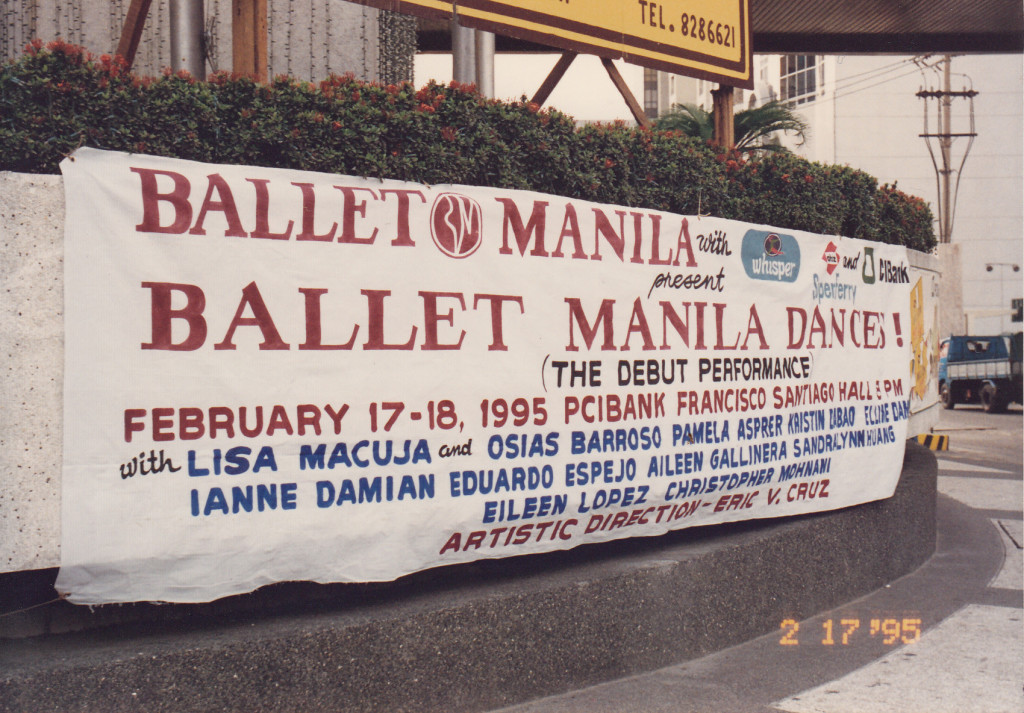
Was there any point when you were beginning that you thought – what have we gotten these ten young dancers into?
OB: The first local provincial trip!
LME: The producer abandoned us.
OB: And it happened twice in the first year! The first was when a producer told the audience that Lisa was sick which is why he had to cancel the show.
LME: The truth was, I refused to perform until he gave us the payment that he owed us. So instead of paying and having us perform – and we really stood our ground and refused to perform – he told the public that I was sick. It was the second to the last performance, and after that, he disappeared. So for the last performance, which was the show for the fund-raising of the doctors, the doctors paid our fees even though they already paid the producer in full. So we got paid for the last show but lost income for the first five shows!
OB: The second incident happened at the end of the first year when we were made to take public transportation on our trip home. We were brought to the bus station to ride the public bus.
LME: Which was a breach of contract because it’s in our contract that we should have a private vehicle.
What sustained you during those difficult initial years?
LME: I think it was more of our stubbornness. We very motivated by wanting to make Ballet Manila work. In a way, we became rebels. We were the breakaway group from another ballet company. We had something to prove. It wasn’t just me. It was everybody. And of course, what sustained us was the support of our friends, families – of Mommy and Daddy – and the support of sponsors and individuals. We had people believing in Ballet Manila, and we were all so very determined to make it work because Ballet Manila was really formed as a company for the dancers, by the dancers.
OB: It helped a lot that it was Lisa. Everybody believed that she had the right to form a company and a school under her direction. That was Ballet Manila’s biggest edge.
LME: Tita Vella (Damian) would donate to us her studio for rehearsing.
OB: We would go from one venue to another because it all depended on the availability of the studio. So to save time and money, we would warm up at Lisa’s home studio and then move to Tita Vella’s to rehearse. If that still wasn’t enough, we’d go to the studio of Jojo Lucila or Shirley Halili.
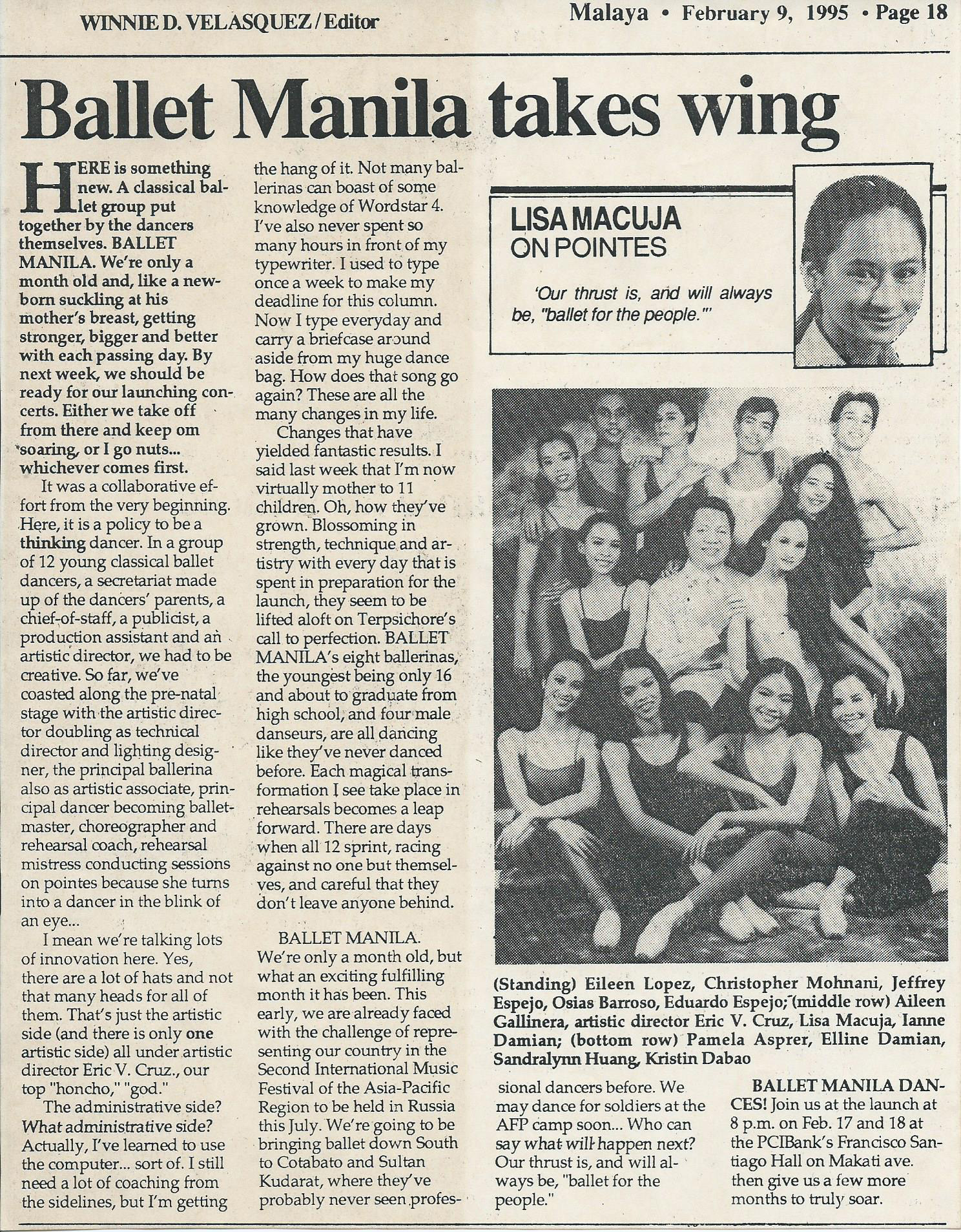
What did it mean to you to be able to bring Ballet Manila to Russia on your first year?
LME: It was a major victory! That was the first time Elline Damian danced as Myrtha.
OB: Christopher Mohnani was handpicked by a Russian prima ballerina to dance the Odette Adagio (in Swan Lake) with him. I think that experience reinforced the Vaganova technique among our dancers because they saw it firsthand and they blended with the company.
LME: And of course that was a huge statement to everyone, especially to those who expected us to fold up after the first few months or after a year, that we pulled it off. I remember that there was a lot of pressure on us especially on me because I was signing all the letters and contracts personally. And I was the only one who spoke Russian so I was the one interpreting and translating for everyone. It was very challenging!
What was the biggest disagreement between the two of you and how was it resolved?
OB: None. I don’t remember anything.
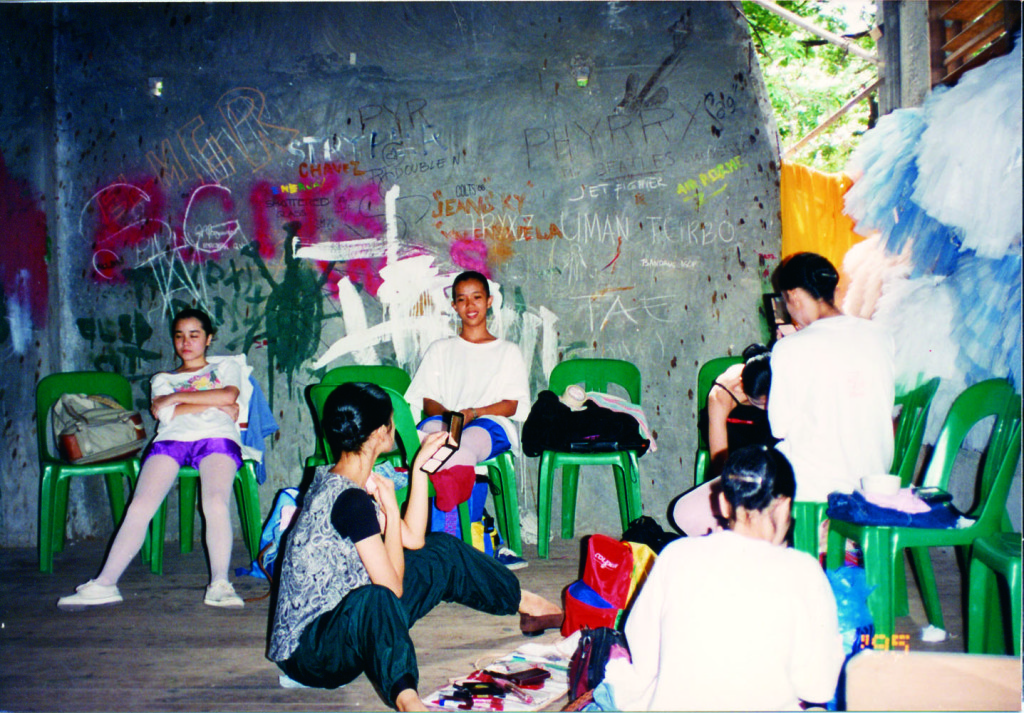
After the passing of artistic director Eric V. Cruz in 2002, what was the turning point for the two of you that you thought, Ballet Manila would be alright?
LME: I think when we were able to do Carmen. It was the end of our season and we were doing Carmen. He passed away two weeks before. Some senior dancers also left.
OB: We were in the middle of many changes then. Lisa and I helped each other in the training of the dancers. The dancers were already well-trained – even the up-and-coming. So even when the seniors left, we were confident that someone could take over. It was just very difficult, especially at that time because I was the only one who knew the whole production. When Tito Eric passed away, I was coaching everybody. Tito Eric already prepared Lisa to be his successor. I guess we knew that we could continue.
To be continued